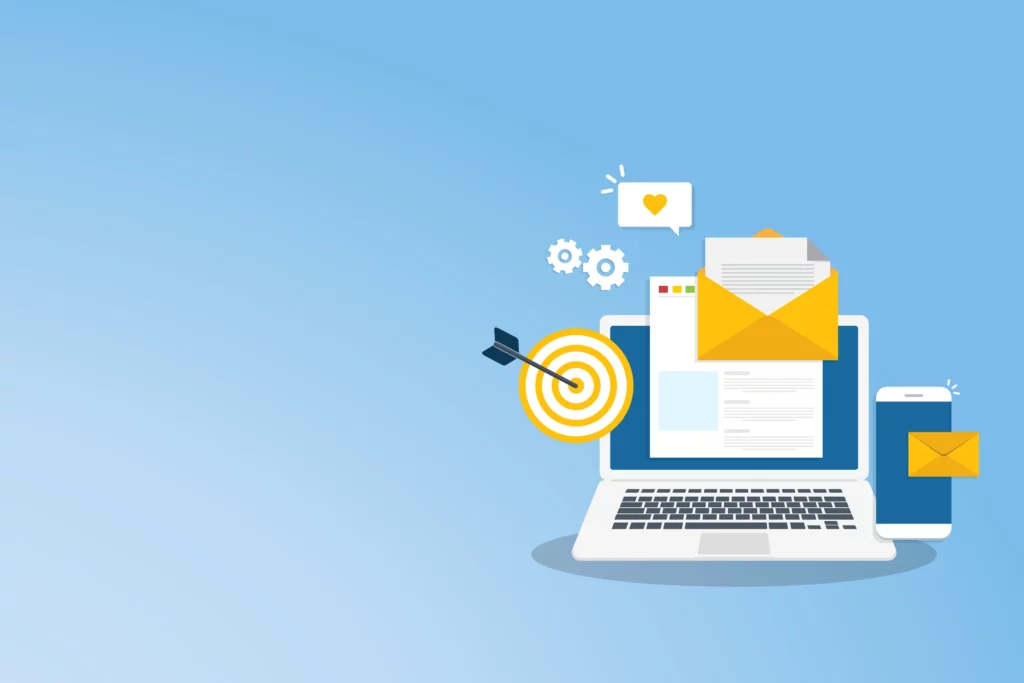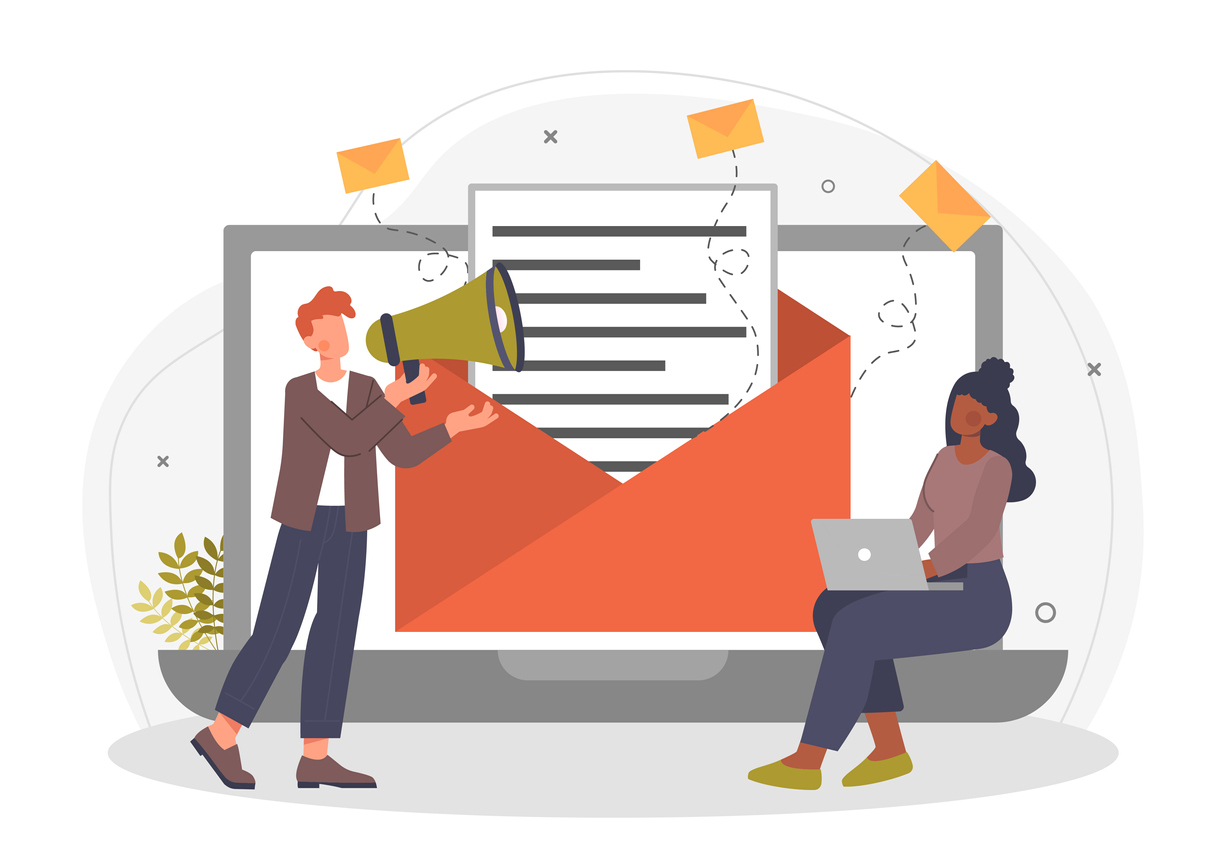Email marketing continues to be a powerhouse in the digital marketing landscape. According to recent studies, for every $1 spent on email marketing, the average return is $42. This impressive ROI highlights why businesses of all sizes prioritize their email strategies.
Whether you’re just starting or looking to refine your strategy, these practices will help you leverage the full potential of email marketing.
Table of Contents
Why Email Marketing is Important
Email marketing has become one of the most effective marketing tools in recent years. What has made this tool standout in the online sphere?
Direct Communication
Email marketing offers a direct line to your audience. Unlike social media, where algorithms control visibility, emails land straight in the inbox. This direct approach ensures your message reaches the recipient without intermediaries. You communicate directly with your audience, fostering a personal connection.
Cost-Effectiveness
Email marketing is budget-friendly. Compared to traditional advertising channels, it requires less investment. You don’t need to spend on print or postage. Many email marketing platforms offer affordable plans. This cost-efficiency makes it accessible for small businesses and startups.
High ROI
Email marketing delivers impressive returns. Research shows an average ROI of $42 for every $1 spent. This high return comes from the ability to target specific audiences. Personalized and relevant content boosts engagement, leading to higher conversion rates.

Personalization and Segmentation
Emails allow for tailored content. You can segment your audience based on various criteria like demographics, behavior, or past purchases. Personalized emails have higher open rates and engagement. Segmentation ensures each recipient receives content relevant to their interests and needs.
Measurable Results
Email marketing provides clear metrics. You can track open rates, click-through rates, and conversions. These insights help refine your strategy. You see what works and what doesn’t, allowing for continuous improvement. This data-driven approach enhances the effectiveness of your campaigns.
These are the best tips that can help you build an effective email marketing strategy.
- Build a Quality Email List
Building a quality email list is crucial for successful email marketing. To grow your list organically, provide valuable content and incentives for subscribers. Strategically place signup forms on your website and promote them on social media. Collaborate with partners and host contests to attract more subscribers.
Opt-in practices are essential for maintaining a quality email list. They ensure compliance with email marketing regulations and improve deliverability. Opt-in subscribers are more engaged and likely to trust your brand. This trust leads to higher conversion rates and better overall performance of your email campaigns. By focusing on building a quality email list and using opt-in practices, you can maximize the effectiveness of your email marketing efforts.
- Segment Your Audience
Segmenting your audience is a powerful strategy in email marketing. It allows you to tailor your messages to specific groups, increasing relevance and engagement.
You can deliver more targeted content that resonates with different demographics. Focus on factors such as age, gender, location, or interests. This personalization enhances the subscriber experience. It leads to higher open rates, click-through rates, and ultimately, conversions.
Behavioral segmentation is another effective approach. Analyze how your subscribers interact with your emails and website. This lets you identify their preferences and interests. For example, you can segment based on past purchase behavior, email engagement, or website browsing history.
Combining demographic and behavioral segmentation enables you to create highly targeted campaigns. You can send personalized product recommendations to customers based on their past purchases. This can allow you to re-engage inactive subscribers with tailored content.
Segmentation also allows you to send relevant content at the right time. It improves the overall effectiveness of your email marketing efforts.
- Craft Compelling Subject Lines
Crafting compelling subject lines is essential for grabbing your audience’s attention. It is a key tool to achieving a high email open rate. A strong subject line should be concise, intriguing, and relevant to the content of your email. Use action-oriented language and personalization to create a sense of urgency. This can make your subject lines more compelling. Additionally, A/B testing different subject line variations can help you identify which ones resonate best. By putting effort into crafting compelling subject lines, you can improve the effectiveness of your email marketing campaigns.
- Personalize Your Emails
Personalizing your emails is essential for engaging your audience. Use personalization tokens to include the recipient’s name, location, or purchase history in your emails. This approach makes your messages feel more relevant and tailored.
For example, you can send product recommendations based on past purchases. Alternatively, offer special discounts for a subscriber’s birthday. Personalized subject lines also increase open rates. By leveraging personalization, you create a more meaningful connection with your audience. This will boost engagement and conversion rates.
- Pay Attention to Timing
Timing plays a crucial role in the success of your email marketing campaigns. Sending emails at optimal times increases the likelihood of them being opened. When emails arrive in the recipient’s inbox at a convenient time, they are more likely to notice and open them. This leads to higher open rates and better overall campaign performance.
Generally, weekdays tend to perform better for email marketing. Meanwhile, Tuesday and Thursday often cited as the most effective days. However, weekends can also be valuable, especially for certain industries like retail or leisure.
Morning hours, particularly between 8 am and 10 am, are considered prime time for sending emails. This is when many people check their emails before starting their workday. Afternoon hours, around 2 pm to 4 pm, can also be effective, as people may check their emails during breaks or after work.
Take into account the time zones of your subscribers when scheduling your emails. Segment your audience based on their location and send emails at times that align with their local time zones.
- Optimize for Mobile
Optimizing your emails for mobile is crucial, as many users access emails on their phones. Ensure your emails are mobile-friendly by using a responsive design that adjusts to different screen sizes. Keep your content concise and to the point, use larger fonts for readability, and make buttons easy to tap with ample spacing around them.
Additionally, compress images to reduce loading times and use single-column layouts for simplicity. Testing your emails on various devices ensures they look great and function well on mobile, enhancing the user experience. This attention to mobile optimization boosts engagement, open rates, and conversion rates. It makes your email marketing efforts more effective.
- Use Clear Call-to-Actions (CTAs)
Optimizing your emails for mobile is essential. Many users check emails on their phones. Use a responsive design that adjusts to different screen sizes. Keep your content concise. Use larger fonts for easy reading. Make buttons easy to tap with enough spacing around them.
Compress images to reduce loading times. Use a single-column layout for simplicity. Test your emails on various devices to ensure they look good and work well. This improves the user experience. Mobile optimization increases engagement, open rates, and conversion rates. It makes your email marketing more effective.
- Automate Where Possible
Automating your email marketing can save time and boost effectiveness. Automation allows you to send targeted emails based on user behavior and preferences. This ensures timely and relevant communication, enhancing engagement.
For example, set up a welcome series for new subscribers. This introduces them to your brand and products. Automated campaigns can offer special discounts or updates. These re-engagment campaigns can win back inactive subscribers by
Several tools can help with automation. Mailchimp offers easy-to-use automation features like welcome emails and abandoned cart reminders. HubSpot provides comprehensive automation workflows, allowing you to segment and target users efficiently. ConvertKit is great for creators, with automation tailored for content delivery and audience engagement.
Using these tools, you can streamline your email marketing processes. They help users maintain consistent communication, and achieve better results.
- Test and Analyze
Testing and analyzing your email campaigns are vital for success. A/B testing allows you to compare different email elements. You can test subject lines, content, or calls-to-action, to see which performs better. By regularly testing these components, you can refine your approach and improve engagement rates.
Analyzing key metrics, such as open rates, click-through rates, and conversion rates, helps you understand what resonates with your audience. It provides insights into subscriber behavior and preferences. Marketers can use this information to make data-driven decisions.
Several tools can help with testing and analyzing your emails. Mailchimp offers robust A/B testing and detailed analytics. It provides insights into campaign performance. HubSpot provides comprehensive reports and testing features. It allows you to track and optimize every aspect of your email marketing. Campaign Monitor is another excellent tool with powerful analytics and easy-to-use A/B testing features.
- Ensure Compliance
Ensuring compliance in email marketing is crucial, especially in the modern market with stringent regulations. Compliance protects your brand and maintains the trust of your audience.
Key regulations include CAN-SPAM, GDPR, and CASL. CAN-SPAM requires clear opt-out options and honest subject lines. GDPR mandates explicit consent from EU residents, along with data protection measures. CASL, applicable in Canada, also emphasizes consent and clear identification of the sender.
Using compliant practices, like double opt-ins, ensures subscribers actively agree to receive your emails. Provide easy ways to unsubscribe, and honor these requests promptly. Be transparent about data usage and protect subscriber information.
Several tools can help with compliance. Mailchimp and HubSpot offer features to manage consent and automate compliance with global regulations. These tools ensure your email marketing adheres to the latest legal requirements, safeguarding your business and fostering trust with your audience.
What Content will Perform Best
Creating valuable content for email marketing is essential to engage your audience and drive conversions.
Provide Useful Information
Content should provide value beyond promotional messages. Share useful information such as tips, how-to guides, industry news, or expert insights. For instance, if you sell fitness products, include workout tips or healthy recipes. Providing useful information positions your brand as a valuable resource, encouraging subscribers to open your emails regularly.
Tell a Story
Storytelling is a powerful tool in email marketing. Stories captivate and engage readers, making your emails more memorable. Share customer success stories, company milestones, or behind-the-scenes looks at your business. Stories create a personal connection and make your content more relatable.
Use Engaging Visuals
Visuals make your emails more appealing and easier to digest. Use high-quality images, infographics, and videos to complement your text. Visuals can illustrate your points, making your content more engaging. For example, an infographic can simplify complex information, while a video can demonstrate a product in action.
Keep Content Concise and Scannable
People often skim through emails, so make your content easy to scan. Use short paragraphs, bullet points, and subheadings to break up text. Highlight key information with bold text or colors. Keeping content concise and scannable helps readers quickly grasp the main points, increasing the likelihood they’ll engage with your email.
Leverage User-Generated Content
User-generated content (UGC) can add authenticity and trust to your emails. Encourage customers to share their experiences with your products through reviews, photos, or testimonials. Featuring UGC in your emails showcases real-life use cases and builds credibility.
Provide Exclusive Offers and Content
Reward your subscribers with exclusive offers, discounts, or early access to new products. Offering exclusive content, like special reports or insider tips, adds value to your emails. This not only drives engagement but also fosters loyalty among your audience.
Mastering email marketing involves recognizing its importance and implementing key strategies. Building a quality email list, segmenting your audience, and crafting compelling content are essential. Personalization, clear calls-to-action, and leveraging user-generated content further enhance engagement. Additionally, timing plays a critical role in maximizing open rates and engagement. By prioritizing these elements, you can optimize your email marketing efforts and achieve greater success in reaching and engaging your audience.



















